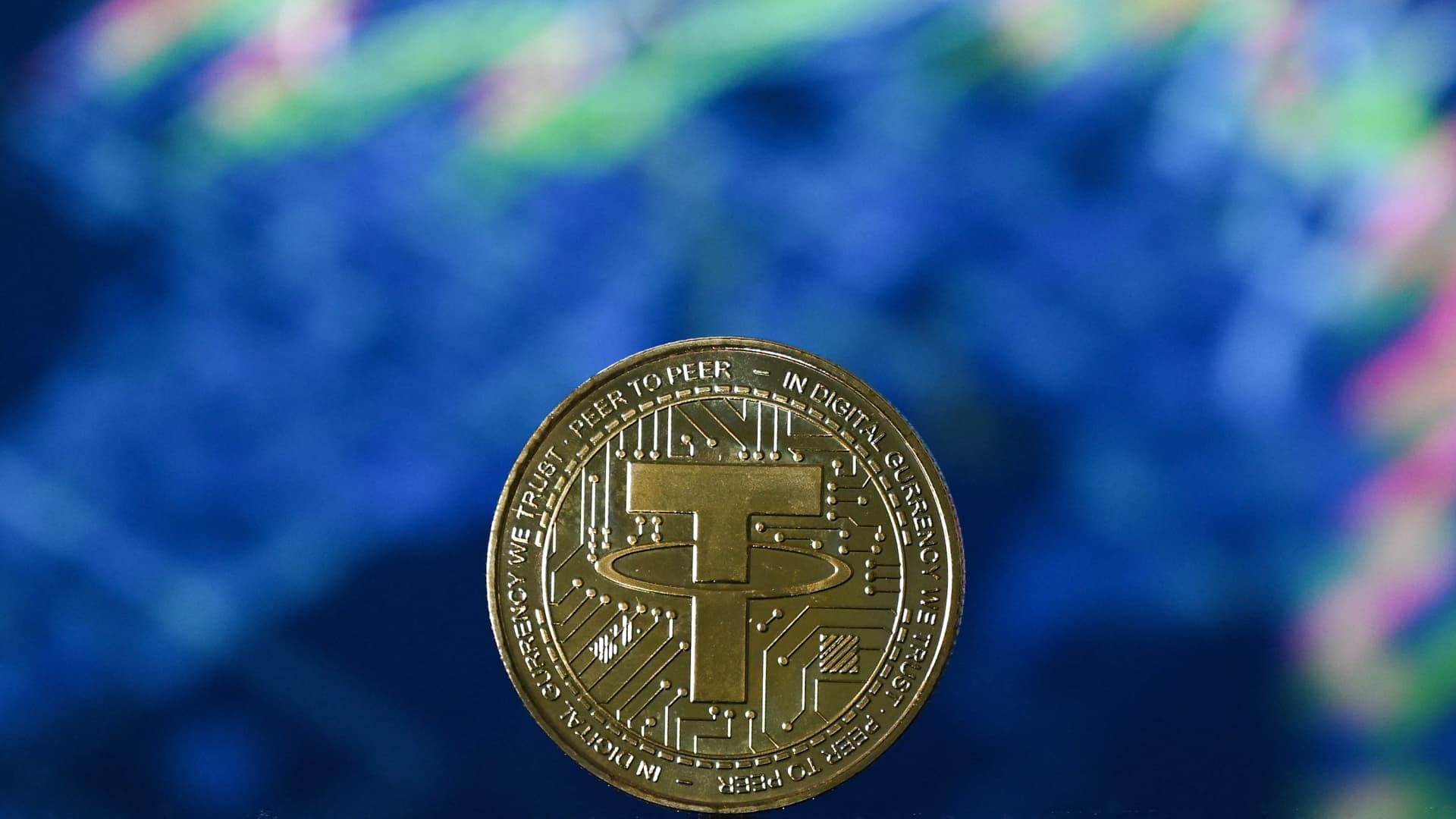Products You May Like
The issuer of the stablecoin tether said in a report that the controversial digital currency is now backed in part by “non-U.S.” government bonds.
Stablecoins are a type of cryptocurrency pegged to the value of sovereign currencies and other traditional assets. Tether, the company behind the token of the same name, aims to track the U.S. dollar.
In its latest so-called “attestation” report, Tether said its holdings of U.S. Treasurys rose 13% to $39.2 billion in the first quarter.
The amount of commercial paper — short-term loans to companies — Tether owns fell 17% to $20.1 billion in the period, and declined a further 20% since Apr. 1, the company said. Tether’s commercial paper holdings have been a concern for regulators and economists due to the potential exposure of money markets.
Tether’s latest disclosure is notable as it’s also the first time the company has revealed it is buying government debt from countries outside the U.S. in addition to Treasury bills.
At around $286 million, the amount of non-U.S. bonds is only a minor portion of the more than $82 billion in assets Tether claims to own. But the source of the funds, and the governments issuing them, isn’t clear.
Bonds issued by the U.S. government are widely viewed as safe and highly liquid. Debt from other less developed economies is riskier, as it comes with a higher probability of default.
Tether was not immediately available for comment on which non-U.S. bonds it has bought.
Paolo Ardoino, Tether’s chief technology officer, said the “latest attestation further highlights that Tether is fully backed and that the composition of its reserves is strong, conservative, and liquid.”
Tether is meant to maintain a 1-to-1 peg to the dollar at all times. But volatility in cryptocurrencies last week, coupled with panic over the collapse of terraUSD, a competing stablecoin, temporarily dragged tether below $1 on several exchanges. TerraUSD, or UST as it’s known, is a so-called “algorithmic” stablecoin that attempted to maintain a value of $1 using code rather than cash.
Tether is a crucial part of the crypto market. With $74 billion in circulation, it’s the world’s biggest so-called stablecoin, facilitating billions of dollars’ worth of trades each day. Investors often park their cash in tether in times of heightened volatility in bitcoin and cryptocurrencies.
“This past week is a clear example of the strength and resilience of Tether,” Ardoino said. “Tether has maintained its stability through multiple black swan events and highly volatile market conditions.”
Still, the amount of cash flowing out of tether has raised fresh questions about the reserves behind it. Tether previously claimed to be backed solely by U.S. dollars. Investors have withdrawn more than $7 billion from Tether in the past week alone.
Tether started releasing quarterly financials after a 2021 settlement with the New York attorney general, which accused the company of lying about its stablecoin’s backing (Tether admitted no wrongdoing).
The documents are signed by MHA Cayman, a little-known accountancy firm based in the Cayman Islands.
Some economists and investors aren’t convinced by Tether’s attestations and are calling for a full audit. The company says such an audit is on the way.
Contagion risk
Treasury Secretary Janet Yellen last week warned about the risk of a “bank run” scenario in which investors flee stablecoins, potentially causing a contagion of other markets. Stablecoins are now a $160 billion market.
“The stablecoin market has grown so much that I think there is some systemic risk at this point,” John Griffin, professor of finance at the University of Texas, told CNBC. “There is definitely a risk that this could spread. And I think people probably underestimate that risk.”
Nevertheless, some of Tether’s early backers say they’re confident the digital coin is sufficiently backed.
“Tether breaking its peg is an overstatement,” Brock Pierce, a co-founder of Tether, told CNBC. Deviations in tether’s price have happened “dozens and dozens of times,” he said.
Pierce, a former child actor, turned to crypto in 2013 and has founded numerous other ventures in the space.
“All start-ups have the challenges of growing pains,” he said.
Reeve Collins, another co-founder of Tether, said the firm’s management has “everything to lose if they screw it up.” Tether is controlled by Ifinex, which owns the cryptocurrency exchange Bitfinex.
Not many financial institutions could redeem over $7 billion in a matter of days, Collins said.
